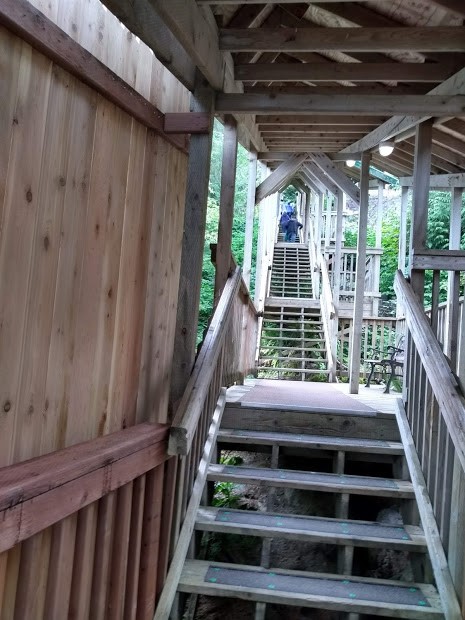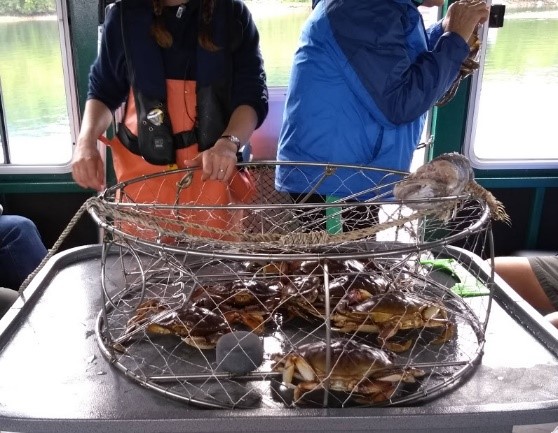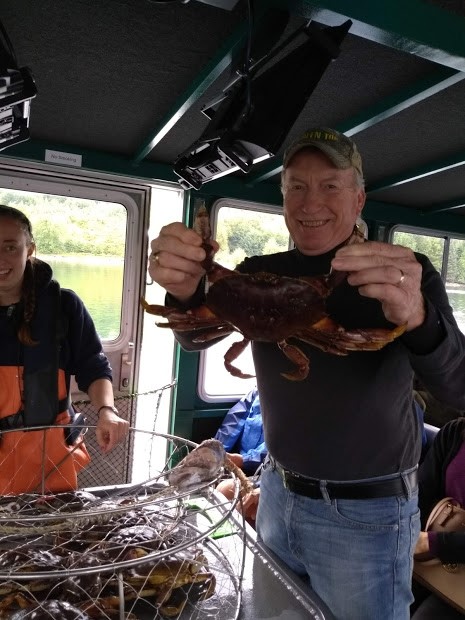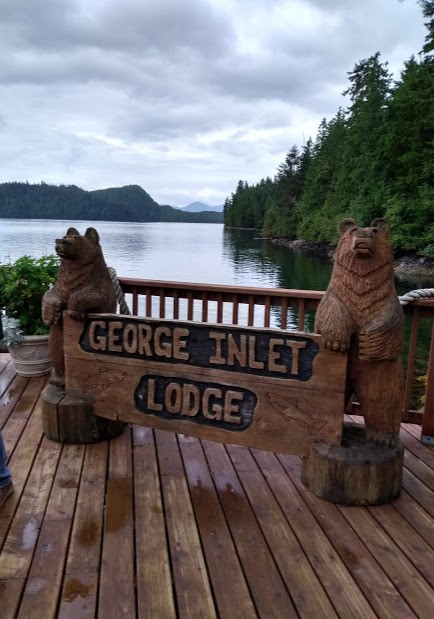Ketchikan is the southernmost city in Alaska. It is also the Salmon Capital of the world and the rain capital of Alaska averaging 153 inches of rain each year. The day we visited Ketchikan, our guide commented that it was an unusually nice day with sunshine and no rain.

George Inlet Lodge was once an old cannery bunkhouse that was moved 90 miles downstream to an old gold mine. There were over 50 steps in the stairwell that descended from the parking lot on the side of the main road that runs through the area to the dock. Surrounded by trees and lumber, it made for a dizzy descent.

Seafood is one of the most valuable resources in Alaska and here we experienced the crabbing industry. We rode the George Inlet waterway on a fishing boat, escorted by porpoises in the water and bald eagles in the air. We were also near the feeding area of the Humpback whales. There are more brown bears than humans in this area, but we never saw any.

Our guide dressed in waterproof bib overalls gave us a history of the area, then pulled the pots from the water. Inside were six gigantic crabs at least four times the size of our East Coast crabs. Any with shells less than six inches in width are returned to the water. We each had a chance to hold one.

The tour concluded with an all you could eat crab feast of Dungeness Crabs and warm butter, a salad, wine, beer and cheesecake smothered in Alaskan blueberries. Remember, these are gigantic crabs and the front legs measured at least ten inches long. They don’t season the crabs as we do, and it didn’t take too many of them to fill us. Each table was encouraged to see who could eat the most crab and stack the tallest pile of shells. Our table didn’t win but we gave it our best shot.
Again, the scenery was beautiful, the experience eye-popping and the food delicious.
Ketchikan also has the world’s largest collection of totem poles – next week’s blog.

